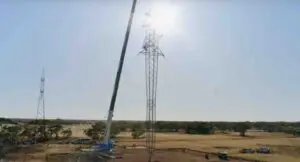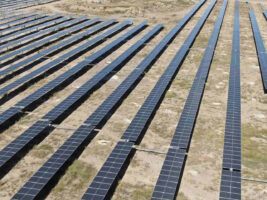Rooftop solar is an unstoppable force in the Australian market that will drive the nation’s total installed solar capacity well past 20 gigawatts, regardless of any attempts by the incumbent utilities to thwart its development, Bloomberg New Energy Finance says.
Kobad Bhavnagri, head of BNEF in Australia, told the 2014 Solar Conference and Expo in Melbourne on Thursday that BNEF expected around 23GW of large, commercial and residential solar PV to be installed in Australia by 2030.
But while the rollout of large-scale solar would be vulnerable to policy changes, such as any winding back of the Large-scale Renewable Energy Target, Bhavnagri said modelling on small-scale PV was “fundamentally sound and really quite unstoppable.”
Bhavnagri said Australia was likely to have 5 million installed commercial and residential PV systems by 2030, with 16GW in cumulative net additions between now and 2030. Australia currently has 1.2 million systems and total capacity of 3.1GW.
“The behind the meter PV market will vary in size at around 900GW market per year,” Bhavnagri said, and different policy measures introduced to put the breaks on rooftop solar, won’t have much of an impact on that either way, he added, because they “don’t fundamentally damage the consumer proposition, which is very strong and very good.”
The graph below illustrates how strong the market will be, even if the utilities and regulators play around with feed in tariffs, connection fees, and even self consumption charges of the type introduced in Spain and Germany.
On the large-scale solar front, BNEF is forecasting that, under the current LRET, solar and wind would each take around half of capacity, with the financing terms for large-scale PV improving steadily as financiers became more comfortable with the technology – a confidence boosted by the due diligence completed by the ACT government’s reverse auction program and two federal agencies – the Clean Energy Finance Corporation and the Australian Renewable Energy Agency that are threatened with defunding or closure.
If the RET generation target was diluted, the share of wind would start to fall, and large-scale solar would contribute up to two thirds of the capacity mix. This graph below illustrates the point, the base case is if the target is left untouched, the second if the target is diluted, and the third if it is simply deferred. Wind has much more at stake from policy changes.
If the LRET was pushed out to 2025, a delay many predict the Abbott government will introduce as a result of its current RET Review process, BNEF predicts there will be even more large-scale solar in the mix, given more time for the solar advantage to grow.
BNEF says that the price of large scale certificates for a solar plant in Queensland would need only to around $23/MWh for them to be viable, whereas wind projects in NSW might need prices of more than $40/MWh. This echoes the conclusions of our report earlier this week that the current market may be as good as it gets for wind energy in Australia.
The Queensland market, one of the few states where BNEF expects electricity load to grow – particularly at peaks times – plays into the hands of solar nicely, said Bhavnagri.
“We expect some large-scale solar PV to built from 2020-2030 to help meet Australia’s rising demand at summertime” – a jump in peak demand that will be driven by increasing uptake of air conditioners.
Overall, BNEF says that renewable energy may account for 49 per cent of total capacity in Australia by 2030, and about 33 per cent by generation.










